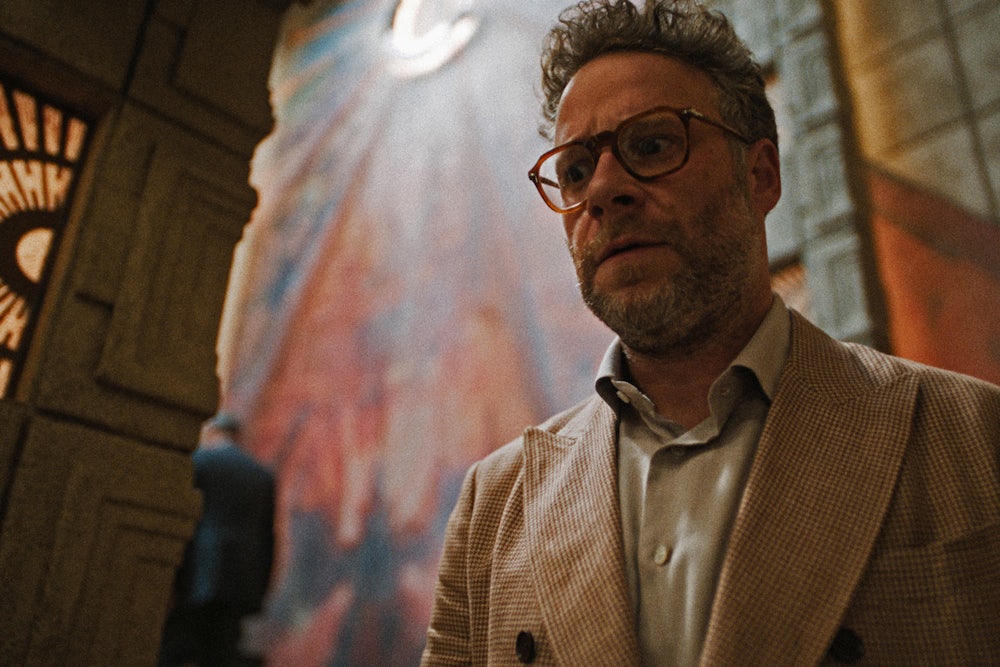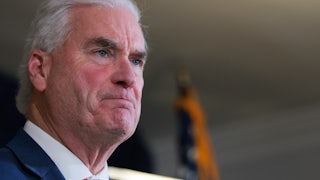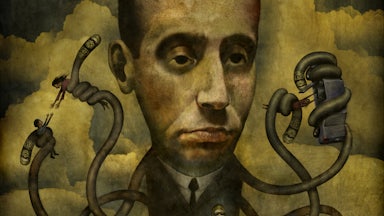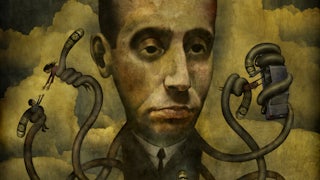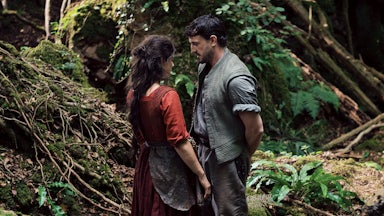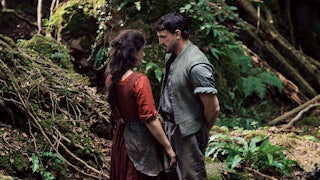The “TV is Art” team won. When I first started writing about television in the early 2010s, there was still something of a taboo about lavishing critical attention on this down-market medium. For many decades, TV was the “boob tube,” the “idiot box,” a medium that wasted your time and attention rather than rewarding them. But in the late 1990s, things started to change. There was a push in popular journalism to consider television not just as an influential medium, but as an art form. It didn’t take right away. Into the 2010s, well after the rise of the premium cable prestige series, after the rise of Tony Soprano and Walter White, my reviews and recaps would still inspire trolls to chastise me for taking television too seriously. But eventually, all the arguing and all the strategic disavowal (“It’s not TV, it’s HBO”) worked. These days, it’s not controversial to talk about TV series in artistic terms. The war over the cultural value of the medium is mostly over.
The irony is that the period when TV’s artistic status became broadly acceptable has also been a period of artistic stagnation, largely industry driven. Writers rooms, once the creative nerve centers of the medium, have been thinned out, de-emphasized, replaced by an increasingly rickety auteur model of TV creation and production; networks have come to prefer one-off, star-studded limited series to the challenge of multiseason drama; studios have come to prefer safe, cheap IP to original ideas; streamers commission veteran TV writers to squeeze the last drops out of already profitable film franchises; and even the big tentpole series of our time, the shows occupying the coveted HBO Sunday night time slot, are rehashes. Last year, FX’s Shōgun was one of the best series on the air, while Netflix’s 3 Body Problem was one of the worst. Both were green-lit because they were adaptations of valuable, battle-tested IP; both emerged from the same swamp.
I think it’s fair, then, to ask whether Apple TV+’s new streaming series The Studio—a tart love letter to the art and industry of old-school filmmaking—is a rebuke to its medium or an attempt to revive it. Created by star Seth Rogen with his lifelong collaborator Evan Goldberg, as well as Peter Huyck, Alex Gregory, and Frida Perez, The Studio tells the story of Matt Remick (Rogen), a young film producer who suddenly finds himself the head of the storied Continental Studios. Remick is an idealist at heart, a cinephile who worships directors and movie stars and who believes in the lasting significance of film as an art form. But his job, it turns out, is not to produce art, it’s to make money. And though he loathes the task, he proves himself pretty good at it. By the end of the first episode, Remick has brought Martin Scorsese to tears and green-lit a franchise film about the Kool-Aid Man.
So The Studio is a television show based on an original idea, created by a medium-size team of writers, invested in both adhering to classic televisual form and stretching its boundaries. It’s also a television show about an entertainment industry that is dying of largely self-inflicted wounds. It’s explicitly a nostalgic paean to the revolutionary cinema of the 1960s and 1970s; implicitly, it’s a nostalgic paean to the revolutionary prestige TV of the 1990s and 2000s. It’s a piece of insightful, compromised art about the seeming impossibility, in this financialized ecosystem, of making any kind of art at all. Long live and/or RIP television.
The Studio begins in flux. Arriving to work in the morning, Remick is advised that his longtime mentor, the studio head, Patty Leigh (Catherine O’Hara), has been unceremoniously sacked by Griffin Mill (Bryan Cranston), the studio’s craven, bombastic CEO. Almost immediately, Remick is called in to see Mill, tested on his willingness to give up his integrity for power, and rewarded with the job. Remick was not scheming for the role, nor does he seem eager to compromise himself, but his naked desire ultimately renders him complicit. Neither the kind of operator who could engineer his own accession nor the kind of ideologue who would turn it down on principle, Remick is a perfect company stooge.
Many of the show’s episodes revolve around Remick’s frustrated desire to be liked by the artistic talent at the studio. His admiration for filmmakers is sincere, but the precise weakness of character that got him the job also makes it nearly impossible for the creatives to respect him. He gets dressed down by Martin Scorsese, annoys Sarah Polley to the point of rage, gets into a shouting match with Ron Howard, and chases Olivia Wilde down a hill. The viewer’s knowledge that his intentions are pure, if loosely held, makes it all the more striking when we see him behave like the asshole all these filmmakers perceive him to be. That he loves the medium so much makes his sins against it so much worse.
Admittedly, this sounds like no fun, and, in ways the show fully intends, it isn’t. The Studio’s baseline pace is a kind of harried trot. There’s a mood of desperation as Remick races to find a missing film reel, or his junior executives Sal (Ike Barinholtz) and Quinn (Chase Sui Wonders) jockey for position in the company hierarchy. In this vision of Hollywood, nobody is cool; everybody is a petty child in constant need of reassurance. The hallways are slick with flop sweat.
What reliably lightens the mood, amid all this dread, is The Studio’s packed roster of perfectly pitched recurring and guest actors. After several years now as a leading lady, Kathryn Hahn returns here to her origin as a scene-stealing supporting player, turning every frame that features her clotheshorse marketing director into a riot; O’Hara delivers a vintage performance as a batty, wise, deposed studio head; Anthony Mackie, out of his mechanized Captain America suit, reminds us of the charm and impeccable comic timing that got him cast in that role in the first place; Polley plays herself playing herself, as a director only just willing to kiss some asses to get her dreams on film.
The problem with The Studio as a comedy is that it isn’t terribly funny. The atmosphere of the show is frenetic from a plotting standpoint—Remick always finds himself in some quickly escalating scrape—but tightly controlled from a filmmaking standpoint. And its mannered, madcap choreography leaves little room for the kinds of punched-up jokecraft that anchored Rogen’s earlier work with Goldberg. Films like Superbad and Pineapple Express were hilarious romps, not only because of the wild abandon of their capers, but because improvisatory alchemy sharpened every joke to a fine point. In The Studio, much of the comedy relies upon us as viewers to sustain a chuckle at broadly humorous scenarios; we won’t be powered through by explosive one-liners. I remember smiling during several episodes of this show, but I don’t remember a single punch line, and that’s rare for a Rogen/Goldberg production.
It’s also a problem, because the show is neither uncommonly profound about its subject nor an uproariously great time. The Studio’s critique of its industry is no doubt accurate, but in its broadness, and in its heartfelt affection for its soulless suits, it can feel more like gentle in-group teasing than genuine polemic. In the elaborate network of homage, Rogen and his team have lost the defining elements of their comedic sensibility. Absent the romantic melancholy of James L. Brooks, the Dipshit Cassavetes realism of Judd Apatow, or the film bro auteurism of Bill Hader, Rogen seems hemmed in, rather than liberated, by his ambition. The Studio is a perfectly engaging, even a frequently entertaining, television show that makes the viewer neither think too much nor laugh too hard.
The main formal feature of The Studio is the long take, also known as The Oner. In such a shot, the camera moves freely, either following a character or exploring a space, and it does so for far longer than the viewer might otherwise expect. It is both a conspicuous stunt and a fantastical achievement, as stunning to watch unfold as it is logistically difficult to achieve. There are lots of famous examples of these types of shots in film, nearly all of which are referenced in The Studio: the opening scene of Touch of Evil, the opening scene of The Player, the Copacabana scene in Goodfellas, and on and on (literally). When a director pulls off a complicated oner, it’s usually because they’re trying to say something, to prove something, or both. It’s a thesis statement and a trick.
The Studio is sometimes about long takes, but it’s also mostly composed of them, too. The show’s second episode, called “The Oner,” which is about Polley trying to film her own long-take masterpiece, is itself shot in one take (or what cleverly appears to be one). But the long take is the show’s dominant aesthetic through-out. The camera bustles and barges into the studio offices along with Remick, imbuing every comic foible with palpable tension.
The reason the long takes in The Studio stand out, though, is not that they are particularly impressive or particularly meaningful, but because their presence reinforces something counterintuitively true: The Studio is a true-blue TV show. While the long take is a staple, even a hallmark, of cinema, the kind of badge of honor a director can wear forever, in this show, it’s often called upon to enhance The Studio’s distinctly televisual features. For instance, a majority of the long takes are classic network “walk and talks” that veteran TV directors made iconic in Sports Night and The West Wing. Tracking a fast-talking conversation through the halls of a workplace, the walk and talk was developed to lend dynamism to exposition that might otherwise feel staid or locked in place. Rogen et al. use this technique to the same effect, but, because the characters walk and talk through seemingly endless long takes, that dynamism begins to feel like risk and recklessness. The same goes for the Curb-style episodic plot constructions. Each cantilevered cringe encounter feels exponentially more mortifying without the relief of a cut. It’s an ingenious idea, however nauseating it can sometimes be to watch, to supercharge these flashy if utilitarian TV techniques by cross-breeding them with a flashy, not particularly utilitarian film one.
The Studio is a series about the crippling, stultifying risk aversion of the contemporary film industry, made with one of the few creative blank checks left floating around in the contemporary TV industry. Filmed at the intersection of two self-annihilating industries, it’s a show about the spectacle of seeing how long they can keep this one impossibly long shot going.
